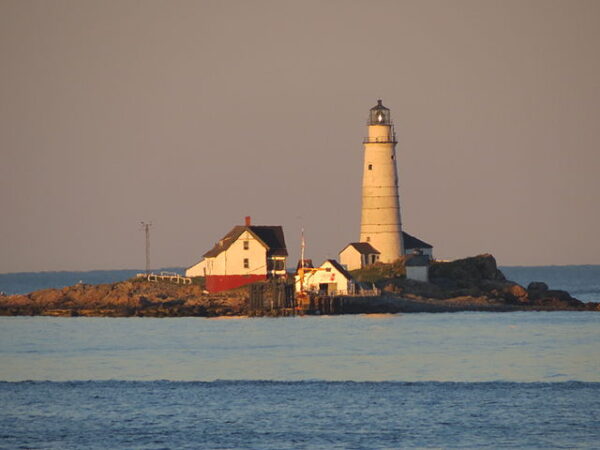
An international team of scientists led by Georgina Dransfield of the University of Birmingham, United Kingdom, has announced an incredible discovery. A “super-Earth” located in a nearby star system that is only 137 light-years away was recently discovered by astronomers. They say that the planet is roughly one-and-a-half the size of Earth.
This planet orbits a small, reddish star and is believed to be an excellent candidate for further research. Additionally, the same system may also contain a second Earth-sized planet, something that has yet to be confirmed.
ABC News discussed the incredible find.
Astronomers say the planet, dubbed TOI-715 b, is about one and a half times the width of Earth and orbits a small, reddish star. The same system also might harbor a second, Earth-sized planet, which, if confirmed, “would become the smallest habitable-zone planet discovered by TESS [the Transiting Exoplanet Survey Satellite] so far,” NASA said in a Jan. 31 press release.
Due to the super-Earth’s distance from its parent star, it could be in a conservative “habitable zone” and harbor the right temperature for liquid water to form on its surface, which is essential to sustain life, according to the agency, which also added that “several other factors would have to line up, of course.”
NASA said the measurements of the habitable zone — “a narrower and potentially more robust definition than the broader ‘optimistic’ habitable zone” — put the newly discovered planet, and possibly the smaller Earth-sized planet, in “prime position” from its parent star.
The agency said that because of the short distance the super-Earth orbits from its parent star, a red dwarf that’s smaller and cooler than our Earth’s sun, a “year” for the planet is equal to 19 Earth days.
NASA defines that habitable zone as “the distance from a star at which liquid water could exist on orbiting planets’ surfaces. Habitable zones are also known as Goldilocks’ zones, where conditions might be just right – neither too hot nor too cold – for life.”
The American space agency also explains where they look and why.
“An old joke offers an answer: Asked why, on a dark night, he was looking for his missing car keys beneath a street lamp, the man answered, “because the light’s better.” Life on other planets might be like nothing on Earth – it could be life as we don’t know it. But it makes sense, at least at first, to search for something more familiar. Life as we know it should be easier to find. And “the light’s better” in the habitable zone, or the area around a star where planetary surface temperatures could allow the pooling of water.
Other similarities to Earth come into sharper focus in the search for life. Many rocky planets have been detected in Earth’s size-range: a point in favor of possible life. Based on what we’ve observed in our own solar system, large, gaseous worlds like Jupiter seem far less likely to offer habitable conditions. But most of these Earth-sized worlds have been detected orbiting red-dwarf stars; Earth-sized planets in wide orbits around Sun-like stars are much harder to detect. Yet these red-dwarfs have a potentially deadly habit, especially in their younger years: Powerful flares tend to erupt with some frequency from their surfaces. These could sterilize closely orbiting planets where life had only begun to get a toehold. That’s a strike against possible life.
Because our Sun has nurtured life on Earth for nearly 4 billion years, conventional wisdom would suggest that stars like it would be prime candidates in the search for other potentially habitable worlds. G-type yellow stars like our Sun, however, are shorter-lived and less common in our galaxy.
Stars slightly cooler and less luminous than our Sun — called orange dwarfs — are considered by some scientists as potentially better for advanced life. They can burn steadily for tens of billions of years. This opens up a vast timescape for biological evolution to pursue an infinity of experiments for yielding robust life forms. And, for every star like our Sun there are three times as many orange dwarfs in the Milky Way.
K dwarfs, are the true “Goldilocks stars,” said Edward Guinan of Villanova University, Villanova, Pennsylvania. “K-dwarf stars are in the ‘sweet spot,’ with properties intermediate between the rarer, more luminous, but shorter-lived solar-type stars (G stars) and the more numerous red dwarf stars (M stars). The K stars, especially the warmer ones, have the best of all worlds. If you are looking for planets with habitability, the abundance of K stars pump up your chances of finding life.”
TOI-715b orbits around a red dwarf. NASA added, “These planets make far closer orbits than those around stars like our Sun, but because red dwarfs are smaller and cooler, the planets can crowd closer and still be safely within the star’s habitable zone. The tighter orbits also mean those that cross the faces of their stars – that is, when viewed by our space telescopes – cross far more often.”
Now we just need to figure out how to get there. Does anyone have a warp drive handy?










Send Probe to said Star system